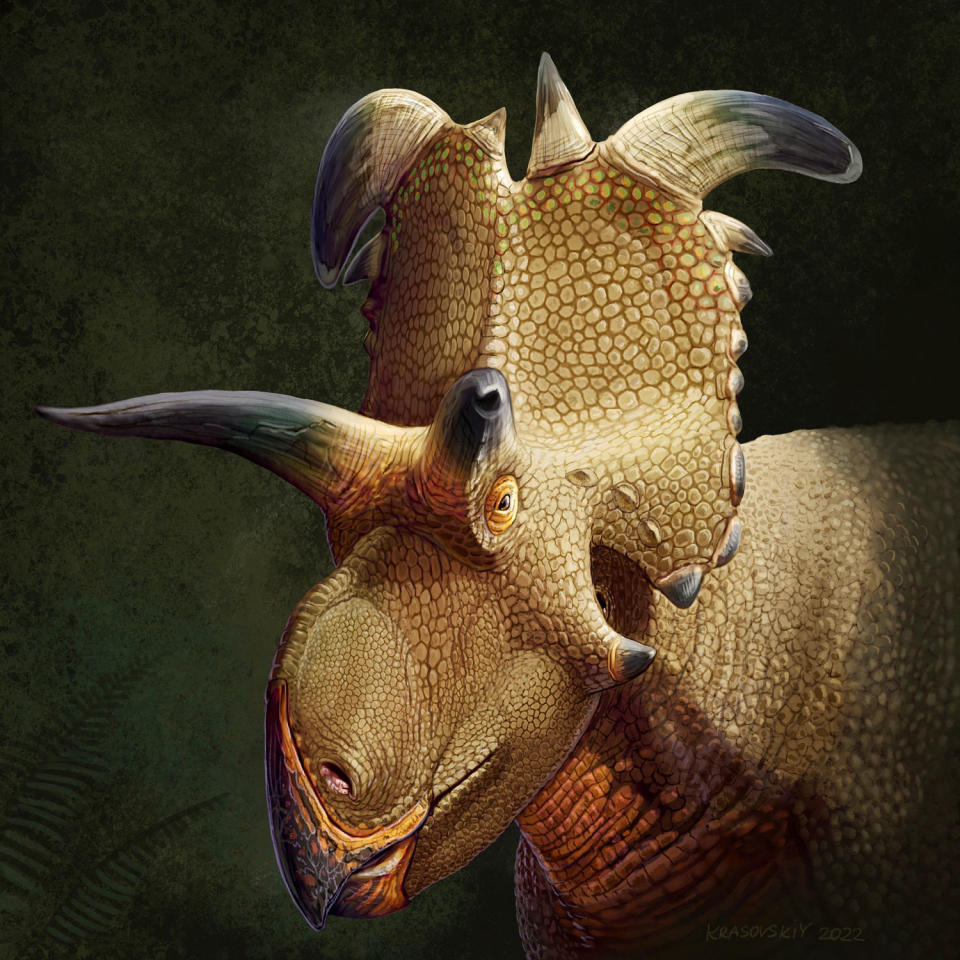Anyone who wandered the swamps of modern-day Montana 78 million years ago may have encountered a dinosaur so unusual that scientists have compared it to the god of mischief himself.
Measuring over six meters in length and weighing five tonnes, this colossal herbivore had a pair of 60-metre-long, leaf-shaped horns on its majestic, fringed head. He also had two 16-inch horns above his eyes, and perhaps more than a dozen others spread around his face like a kind of spiky crown.
Lokiceratops rangiformis – named after the Norse god Loki, recently popularized in the Marvel Cinematic Universe – is a brand new dinosaur that had not previously been discovered by paleontologists, scientists said in a journal on Thursday.
Not everyone agrees. Some colleagues have wondered whether it is just a variation on another type of ceratopsidae, the family of dinosaurs that includes the iconic triceratops.
Those behind the study, published in the journal PeerJ, disagree.
“While some paleontologists may argue that Lokiceratops is a variant of another dinosaur it lived alongside… the number of frill horns is dramatically different,” Joseph Sertich, a professor at Colorado State University and co-author of the study, wrote on Instagram. It’s “not just the size and shape.”

The Lokiceratops had at least 12 smaller horns coming out of its head, and perhaps as many as 14, while another similar dinosaur, the Medusaceratops, had only 10, he said. Furthermore, he added, there is no evidence that it had a rhinoceros typical of many of its brethren.
This late Cretaceous beast was found in the badlands of Montana, a part of the western United States with one of the highest concentrations of dinosaur fossils on Earth.
Commercial fossil hunter Mark Eatman found the bones in the spring of 2019 on a Montana ranch in the Kennedy Coulee region, just a few miles from the Canadian border.
The Danish Museum of Evolution purchased the skeleton in 2021 and transported it to Utah-based fossil preparation and mounting company Fossilogic. There, experts used polyester resin to sculpt missing pieces from the skull and body, while surrounding the whole thing with silicone rubber molds so replicas could be cast.
It was assembled in 2022 and taken to the museum in Denmark where it is on display. NBC News has contacted the museum for comment.
“This is the only known example in the world,” says the museum’s website. “This incredible horned dinosaur is notable for its enormous, leaf-like horns… Lokiceratops was a giant!”
Many experts seem convinced.
“It really appears to be a new genus and a new species,” Michael Benton, professor of vertebrate paleontology at the University of Bristol in England, told NBC News. “I find the new article very thorough and clear, and they make a compelling case for the complex ecological relationships of the time,” he said in an email.
This dinosaur and its “close relatives all lived side by side,” Benton added, saying researchers often saw the same phenomenon in other species: “small-scale evolutionary explosions of five or six closely related species all living and growing close together.” to feed. .”
Others, however, are more skeptical.
“It’s an interesting-looking animal,” Jordan Mallon, a paleontologist at the Canadian Museum of Nature, told Science Magazine. “I think it will be a little controversial as to whether it represents a new species or not.”
This article was originally published on NBCNews.com






